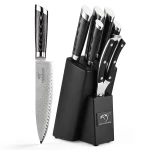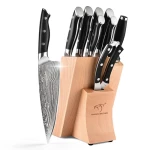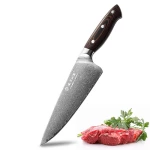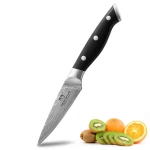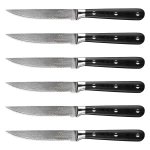A Guide to Using Your Chef's Knife: Basic Cutting Techniques and Tips for Advanced Users
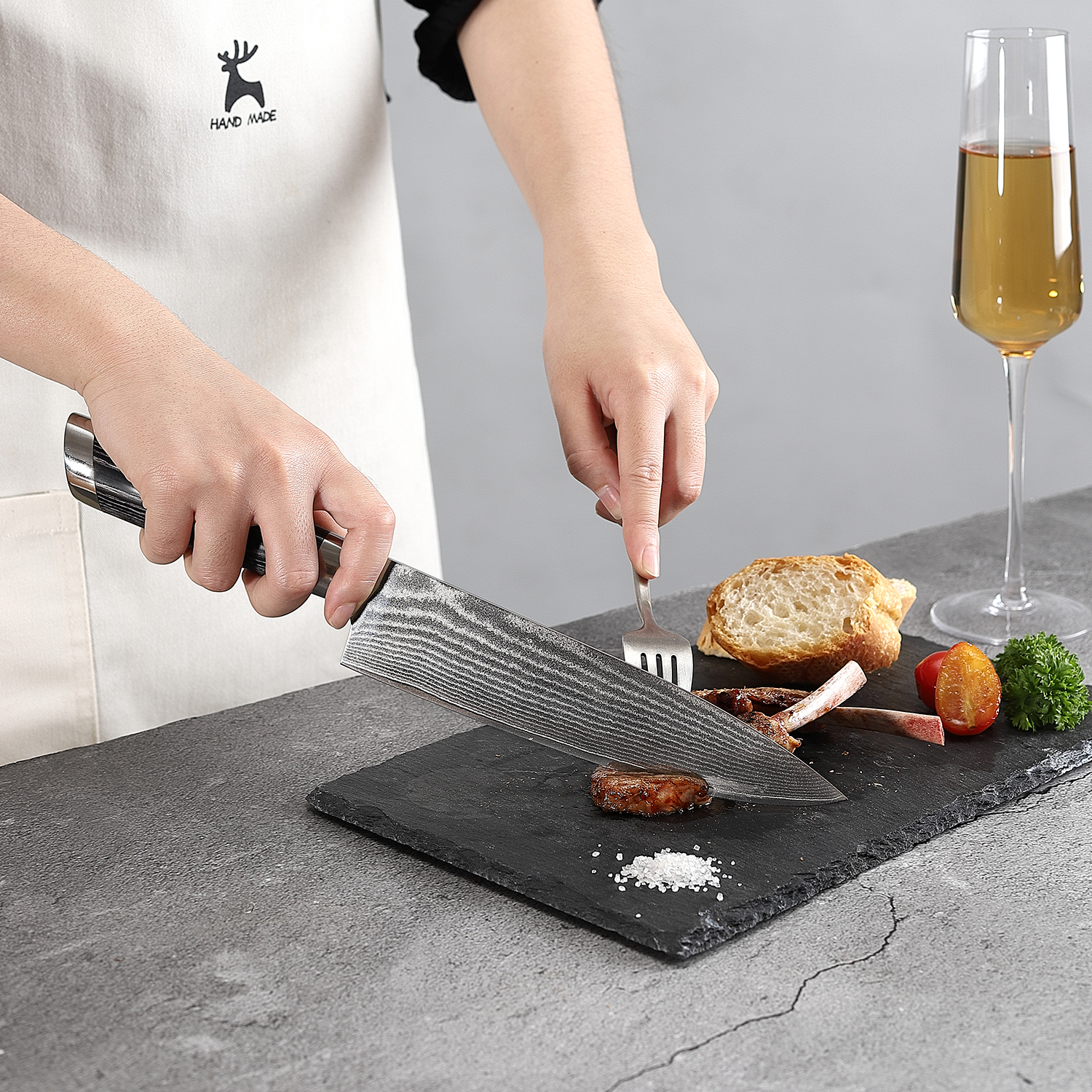
Using a chef's knife effectively is essential for any cook, whether you're a beginner or an advanced user. Here's a comprehensive guide to basic cutting techniques and tips for advanced users:
Basic Cutting Techniques:
1.The Claw Grip:
Position your non-dominant hand in a claw-like shape to hold the food securely while cutting. Tuck your fingertips under and use your knuckles as a guide for the knife.
2.The Rock Chop:
Hold the chef's knife with your dominant hand and use a rocking motion to chop ingredients. This technique is ideal for chopping herbs, vegetables, and nuts.
3.The Slice:
For thin slices, place the blade against the food and use a smooth, steady motion to slice through. Maintain a consistent angle to achieve uniform slices.
4.The Chop:
Use a downward motion to chop ingredients into smaller pieces. Start by making parallel cuts, then turn the food perpendicular to the blade and chop again.
5.The Dice:
Begin by creating uniform slices, then stack them and make perpendicular cuts to create cubes. This technique is commonly used for onions, potatoes, and other vegetables.
6.The Julienne:
Slice vegetables into thin, uniform strips resembling matchsticks. Start by creating thin slices, then stack them and cut into strips of equal width.
Tips for Advanced Users:
7.Knife Maintenance:
Keep your chef's knife sharp by regularly honing and sharpening it. A sharp knife is safer and more efficient than a dull one.
8.Advanced Cutting Techniques:
Experiment with advanced cutting techniques such as chiffonade (thinly slicing herbs or leafy greens), brunoise (finely dicing vegetables), and tourne (creating barrel-shaped cuts).
9.Speed and Efficiency:
Practice cutting with speed and efficiency to improve your kitchen workflow. Work on your knife skills regularly to become more proficient.
10.Precision Cutting:
Master the art of precision cutting by focusing on accuracy and consistency. Pay attention to knife angle, hand placement, and cutting motion.
11.Ingredient Preparation:
Learn different methods of ingredient preparation, including trimming, peeling, and deboning. Properly prepared ingredients lead to better cooking results.
12.Safety Awareness:
Always prioritize safety when using a chef's knife. Pay attention to your hand placement and keep your fingers away from the blade to avoid accidents.
13.Experimentation:
Don't be afraid to experiment with different cutting techniques and styles. Explore new recipes and challenge yourself to improve your culinary skills.
Remember, mastering the use of a chef's knife takes time and practice. By honing your skills and experimenting with different techniques, you'll become more confident and efficient in the kitchen. Happy cooking!

